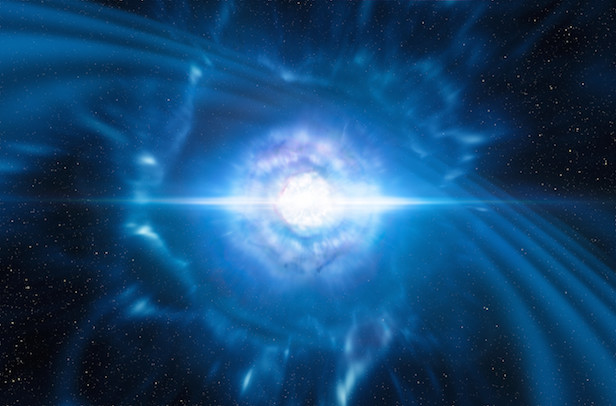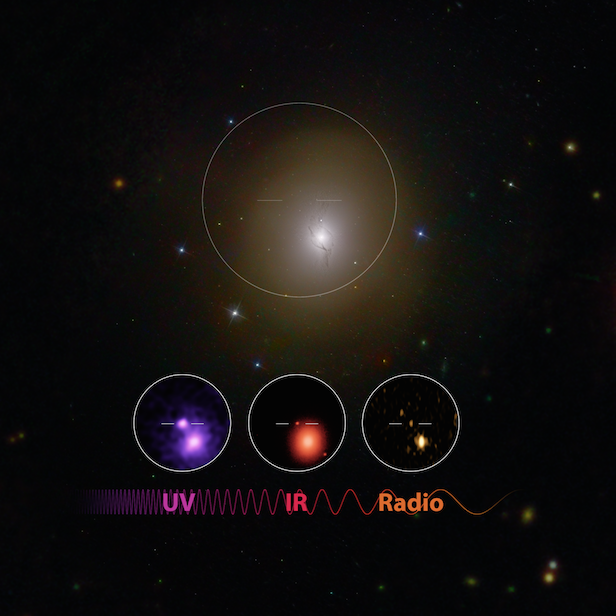Astronomers detect gravitational waves from merging neutron stars for first time
Before now, the ripples in space-time had only been detected from black-hole mergers

Two small, but incredibly dense, neutron stars collided to produce a ‘kilonova’ explosion that caused the detection of these gravitational waves. Image credit: ESO/L. Calçada/M. Kornmesser
For the first time ever, astronomers have detected a gravitational wave emission from the collision of a pair of neutron stars. Because of this, telescopes worldwide were able to produce the first visual observations of the gravitational wave source, now dubbed GW170817. This confirmed the production and dispersion of heavy elements, such as gold and platinum, throughout the universe. Other than black holes, the only other explanation for this source could have bee the merger of two neutron stars. These are the leftover cores of dead stars, and they’re so dense that a teaspoon of their mass would weigh a billion tonnes.
“It immediately appeared to us the source was likely to be neutron stars, the other coveted source we were hoping to see – and promising the world we would see,” says David Shoemaker, a senior research scientist in MIT’s Kavli Institute for Astrophysics and Space Research. “From informing detailed models of the inner workings of neutron stars and the emissions they produce, to more fundamental physics such as general relativity, this event is just so rich. It is a gift that will keep on giving.”
On 17 August 2017, the Laser Interferometer Gravitational-Wave Observatory (LIGO) and the Europe-based Virgo detector found an unusually long signal corresponding to gravitational waves. The previous black-hole mergers showed a signal of less than a second, whereas this detection lasted for roughly a hundred seconds. Not only that, but afterwards there was a two second burst of gamma rays originating from the same position, and this was picked up by NASA’s Fermi Gamma-ray Space Telescope and ESA’s International Gamma Ray Astrophysics Laboratory (INTEGRAL).
Now the hunt was on the chase down the visual source of this emission, which took months of locating the source and gaining visual observations. “This event has the most precise sky localisation of all detected gravitational waves so far,” says Jo van den Brand of Nikhef (the Dutch National Institute for Subatomic Physics). “This record precision enabled astronomers to perform follow-up observations that led to a plethora of breathtaking results.”

There was a variety of electromagnetic radiation emission from GW170817, including ultraviolet, infrared and radio emission. Image credit: R. Hurt/M. Kasliwal/G. Hallinan/P. Evans/GROWTH
It was at this point the scientists had managed to narrow the signal down to a spot in the galaxy NGC 4993, which was 130 million years away in the constellation of Hydra. Theorists predicted that there would have been an initial outburst of light from a neutron star collision followed by its relatively-rapid dimming, also known as a ‘kilonova’. This is exactly what was seen in the following weeks and months, as theoretical astrophycist Enrico Ramirez-Ruiz of UC Santa Cruz explained, “It doesn’t look like anything we’ve ever seen before. It got very bright very quickly, then started fading rapidly, changing from blue to red as it cooled down. It’s completely unprecedented.”
“When we were first planning LIGO back in the late 1980s, we knew that we would ultimately need an international network of gravitational-wave observatories, including Europe, to help localise the gravitational-wave sources so that light-based telescopes can follow up and study the glow of events like this neutron star merger,” says Caltech’s Fred Raab, LIGO associate director for observatory operations. “Today we can say that our gravitational-wave network is working together brilliantly with the light-based observatories to usher in a new era in astronomy, and will improve with the planned addition of observatories in Japan and India.”
Keep up to date with the latest reviews in All About Space – available every month for just £4.99. Alternatively you can subscribe here for a fraction of the price!




